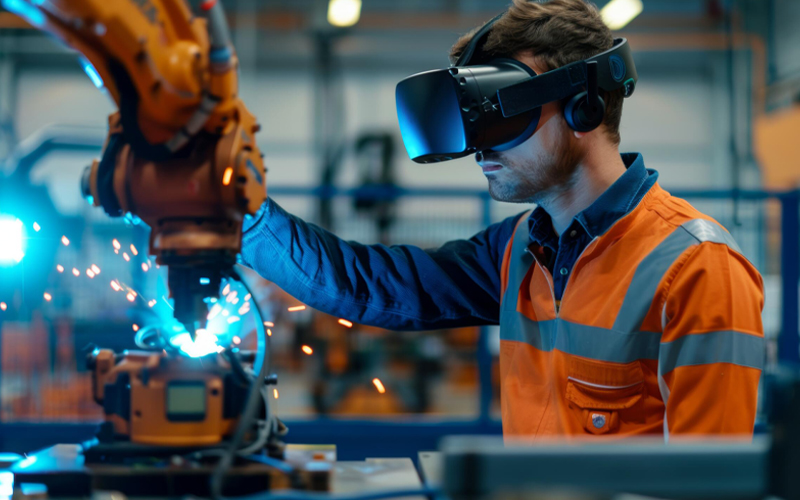A recent Statista report states that “the quantum of global municipal solid waste generation will be 3.4 billion metric tons by 2050”. Figures also indicate that only 20% of waste is recycled annually and the balance ends up in open dump sites and landfills causing unfathomable damage to the environment. Microbes present in these sites unleash methane, a potent contributor to global warming, along with carbon dioxide, compounding the detrimental effects.
It is imperative to proactively curtail the waste issue before it escalates beyond manageable proportions, particularly due to the substantial presence of valuable resources present in discarded material. Among these resources, organic matter constitutes 44%, paper makes up 17%, and plastic comprises 12%.
A UN study indicates that “resource extraction causes 53% of the world’s carbon emissions and over 80% of biodiversity loss.” The extracted resources are further processed, resulting in even more harmful emissions. The situation is worsened by the manufacturing sector which accounts for 45% of global greenhouse gas emissions. Emissions of greenhouse gases from industrial sources predominantly arise from the combustion of fossil fuels to generate energy, alongside the release of greenhouse gases resulting from specific chemical reactions essential for the transformation of raw materials into finished goods.
What are the eventual repercussions of these current trends? The outcome is an impending depletion of the earth's resources, driven by our current consumption that surpasses the planet's annual regenerative capacity by approximately 60%.
The only sustainable way forward is the adoption of a circular economy approach to disrupt the conventional linear model of take-make-use-dispose.
The Circular Economy (CE)
At the core of the CE principle is the commitment to minimising waste, elongating the lifecycle of products, and effectively recovering, reutilising, and recycling materials from items that have reached their end-of-life stage. Additionally, the principle encompasses the practice of repairing and refurbishing products, with the overarching goal of maximising the duration for which materials remain in the circular cycle.
CE and manufacturing
By shifting away from the traditional linear "take-make-use-dispose" approach, manufacturers can embrace a holistic framework that prioritises resource efficiency, longevity, and reduced environmental impact. Through practices like product redesign, material recycling, and remanufacturing, the sector can minimise waste, optimise resource use, and extend product life cycles. This approach will not only curb environmental degradation but also foster innovation, cost savings, and enhanced market competitiveness. By aligning with CE principles, The manufacturing industry can forge a path towards a regenerative and resilient manufacturing landscape.
By integrating CE practices in the sector, manufacturers can reduce:
- The quantum of raw materials needed (up to 70% savings in material requirement)
- Environmental footprints (by 2050, a 40% reduction in global greenhouse gas emissions)
- Industrial waste (resource recovery)
- Costs (less raw material usage, reduced costs due to resource recovery)
CE principles promote secondary manufacturing activities encompassing activities like collection, refurbishment, and remanufacturing, thereby generating new avenues for employment. This proactive approach fosters economic growth, drives heightened profitability, and diminishes operational expenses. Operating with CE principles, enterprises can unlock novel customer segments, leverage enhanced supply reliability and reduce their reliance on finite raw materials. By embracing these principles, businesses usher in a new era of sustainable innovation, bolstered competitiveness, and resilient resource management.
What works in favour of the circular economy concept is the undeniable fact of value creation for everyone involved – businesses, customers and governments.
The application of CE principles in manufacturing
The incorporation of CE practices into the manufacturing sector revolves around the intentional creation of enduring value while mitigating ecological carbon footprints through adept waste management strategies. This transformative approach is underpinned by the cardinal principles encapsulated by the four Rs: “Reduce, Refurbish/Reuse, Recycle, and Recover”.
The pertinence of these principles is contingent upon specific industry dynamics. While the tenets of the four Rs hold universal relevance, their applicability varies across different industrial contexts.
Reduce:
Reducing material usage while maintaining high quality standards is essential for long-term relevance in the market. Innovative designs and efficient manufacturing are imperative for achieving this goal. Embracing eco-conscious design principles that facilitate the development of modular products, easily assembled and disassembled, is pivotal. Incorporating materials sourced from existing recycling facilities should be a central consideration in the design phase.
Further, design teams should leverage relevant cutting-edge technologies to process a diverse array of materials. A strategic approach involves the creation of products that address a multitude of concerns. Further progress can be achieved by modernising production through the adoption of energy-efficient equipment and robotic process automation to optimise processes and minimise raw material consumption.
Illustrative instances of these approaches include the utilisation of wood or bamboo for packaging and transitioning to minimalist, recycled-material-based packaging solutions.
Refurbish/Reuse:
The main objective of the refurbish/reuse principle is to curtail the consumption of raw materials by either wholly or partially repurposing products and using them in the production of new items. Refurbishment plays a pivotal role in bringing products to a state of functional excellence without compromising on quality. Some examples of refurbishment are the restoration of products like furniture and electronics, a practice often associated with reputable brands. Similarly, the transformation of a conventional automobile engine into an electric one is yet another illustrative instance of this concept.
Recycle:
Recycling involves transforming products that are at an end-of-life stage into valuable, reusable raw materials. Several industries have the potential for the incorporation of recycled materials into their production cycles without affecting quality. While recycling helps reduce waste, the practice needs meticulous and targeted strategies due to the logistical intricacies involved. Although not without its challenges, recycling is a comparatively less complex option when compared to product reuse or refurbishing activities.
Recover:
The ‘recover’ principle in waste management encompasses the strategic extraction of value and resources from discarded materials that might not be directly recyclable. This involves processes such as energy recovery through controlled incineration, generating power or heat from organic waste, or converting non-recyclable plastics into energy sources. The recovery principle helps build a comprehensive circular economy. This principle contributes to both resource optimisation and environmental sustainability by minimising the wastage of energy and materials that are present within the waste stream.
The concept of a circular economy is taking firm roots in the collective psyche of society. A recent McKinsey study indicates willingness among customers to absorb the cost of sustainable packaging. According to a collaborative research study undertaken by McKinsey and Nielsen “products featuring Environmental, Social, and Governance (ESG)-related claims contributed to an impressive 56% of overall growth, inclusive of recurring sales.” These compelling trends underscore a resounding business rationale for CE-centric manufacturing, motivating a substantial number of businesses to embark on the transformative journey of achieving both profitability and sustainability objectives.
*For organizations on the digital transformation journey, agility is key in responding to a rapidly changing technology and business landscape. Now more than ever, it is crucial to deliver and exceed on organizational expectations with a robust digital mindset backed by innovation. Enabling businesses to sense, learn, respond, and evolve like a living organism, will be imperative for business excellence going forward. A comprehensive, yet modular suite of services is doing exactly that. Equipping organizations with intuitive decision-making automatically at scale, actionable insights based on real-time solutions, anytime/anywhere experience, and in-depth data visibility across functions leading to hyper-productivity, Live Enterprise is building connected organizations that are innovating collaboratively for the future.







